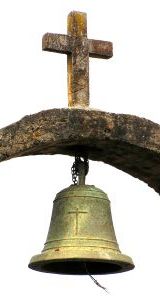


4th Sunday of LentYear B - 14/3/2021 - Gospel: Jn 3: 14-21
Light and Darkness
Light and darkness are two separate opposing entities. Where there is light, there is no darkness, because light dispels darkness. Where there is darkness there is absence of light. Darkness is associated with dark actions, while light promotes a right course of action. Human beings know, light is good, but choose to satisfy the desire of the flesh, and that is the common weakness of us. The account of a serpent on the pole was an example (Numbers 21:4-9). Israel, as a nation, loved the light, but on their journey to the Promised Land, sometimes they longed to remain in the dark of the past. Wilderness is another hostile symbol to life. Wilderness experience was not a testing time for God's people, but rather it was a time for renewal and trusting in God's mercy. It was a time of letting go of everything, of freeing themselves from the yoke of slavery in Egypt, to embrace a new life, and freedom, after they entered the Promised Land. The process of discarding the old way, and embracing the new way of life, was a struggle. Under Moses' leadership, God liberated His people out of Egypt, and led them to enter the Promised Land. On the way, the people rebelled against Moses, grumbling about their discomfort on the journey. Because of their longing for the past, God allowed serpents to bite the people, and some were killed. God didn't punish the people for their grumbling, but rather reminded them, that the old way led to destruction and death. Moses appealed to God. A bronze serpent was hung on a pole. Anyone who was bitten by a snake looked at the bronze serpent to repent and live. Gazing at the bronze serpent, the symbol of deceit and lies, would remind the people to recall God's goodness and mercy, and that led to repentance, and so they received forgiveness and life. Gazing at the bronze serpent reminded the people, that God's love was stronger than their sin, and God's mercy was more powerful than their infidelity.
Today we look at Jesus' broken body on the cross. It reminds us that God's love is much more powerful than human brutality. God loves us even when we choose to live in darkness, and patiently God waits for us to repent, to return. This, God's unconditional love for us, is beyond reasoning. It is hard to comprehend God's love for us. It is even harder to understand the way in which God chose to reveal God's love. All options were on the table, and yet God chose the hardest one, the most shameful, humiliating way to show God's love. Jesus chose to come into the world to be one of us. Living in the world, Jesus was subjected to the power of darkness. He was rejected, betrayed, arrested, condemned, and hung on the cross, receiving a death punishment reserved only for criminals. God is the true Light, and darkness is the work of devil. Darkness of the world exposes what is dark in us, the darkness of our heart. The true Light stands for: saving, coming to the light, believing, doing what is right, and everlasting life. In contrast, the works of the devil are: condemnation, remaining the in the dark, unbelieving, doing what is evil, and eternal death.
God had created a beautiful world for us to enjoy. Infidelity and idolatry brought darkness into the world. It was the work of the devil. The people sinned. And the sting of sin is death. God would not let death dominate what God had created, but saved it by the life and blood of God's only Son. Crucifixion, resurrection and ascension is God's way to express God's love and mercy. Without Jesus' help, we can't come to the light; with Jesus everything is possible.
Today we look at Jesus' broken body on the cross. It reminds us that God's love is much more powerful than human brutality. God loves us even when we choose to live in darkness, and patiently God waits for us to repent, to return. This, God's unconditional love for us, is beyond reasoning. It is hard to comprehend God's love for us. It is even harder to understand the way in which God chose to reveal God's love. All options were on the table, and yet God chose the hardest one, the most shameful, humiliating way to show God's love. Jesus chose to come into the world to be one of us. Living in the world, Jesus was subjected to the power of darkness. He was rejected, betrayed, arrested, condemned, and hung on the cross, receiving a death punishment reserved only for criminals. God is the true Light, and darkness is the work of devil. Darkness of the world exposes what is dark in us, the darkness of our heart. The true Light stands for: saving, coming to the light, believing, doing what is right, and everlasting life. In contrast, the works of the devil are: condemnation, remaining the in the dark, unbelieving, doing what is evil, and eternal death.
God had created a beautiful world for us to enjoy. Infidelity and idolatry brought darkness into the world. It was the work of the devil. The people sinned. And the sting of sin is death. God would not let death dominate what God had created, but saved it by the life and blood of God's only Son. Crucifixion, resurrection and ascension is God's way to express God's love and mercy. Without Jesus' help, we can't come to the light; with Jesus everything is possible.
Written by Fr Vũđình Tường
St Francis Xavier Catholic Parish
Roman Catholic Archdiocese of Brisbane Australia
St Francis Xavier Catholic Parish
Roman Catholic Archdiocese of Brisbane Australia



